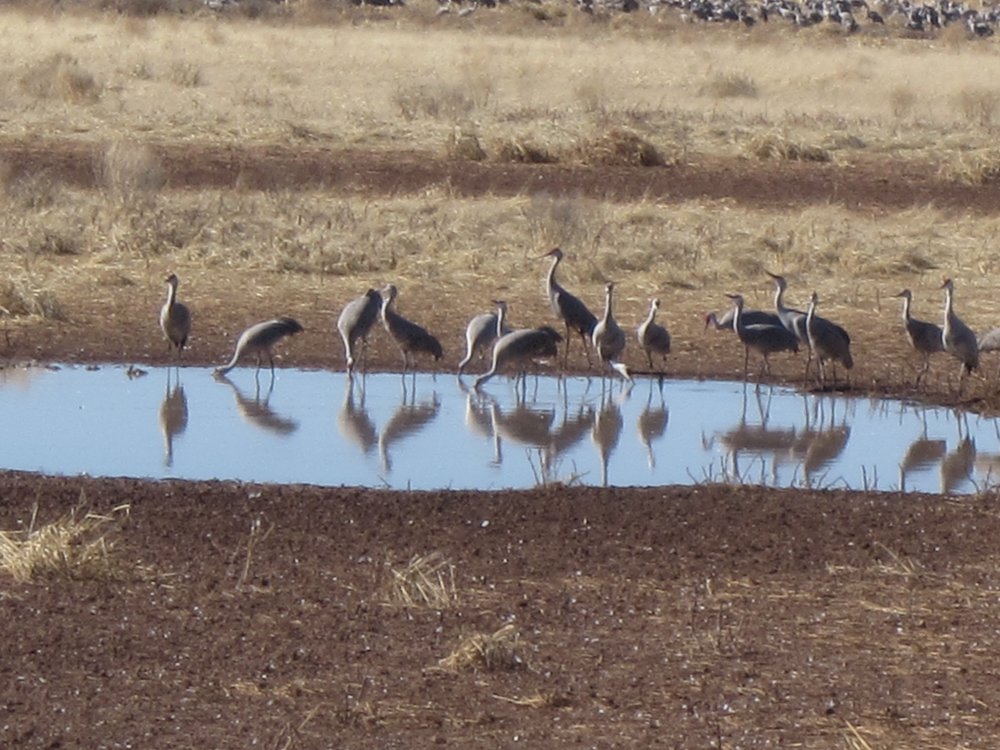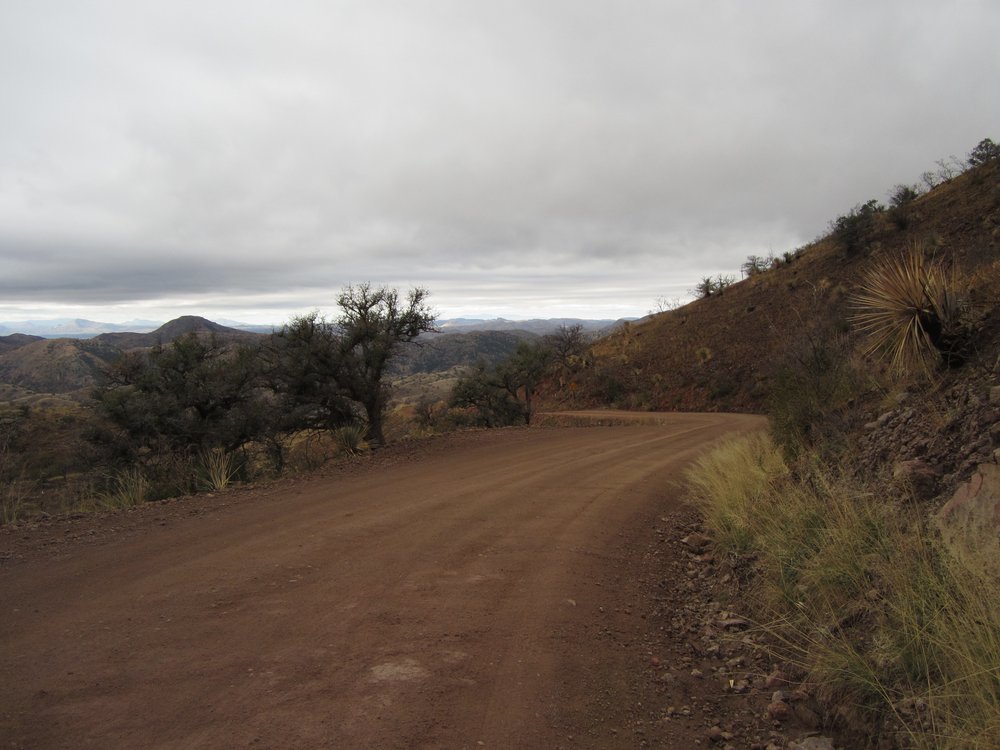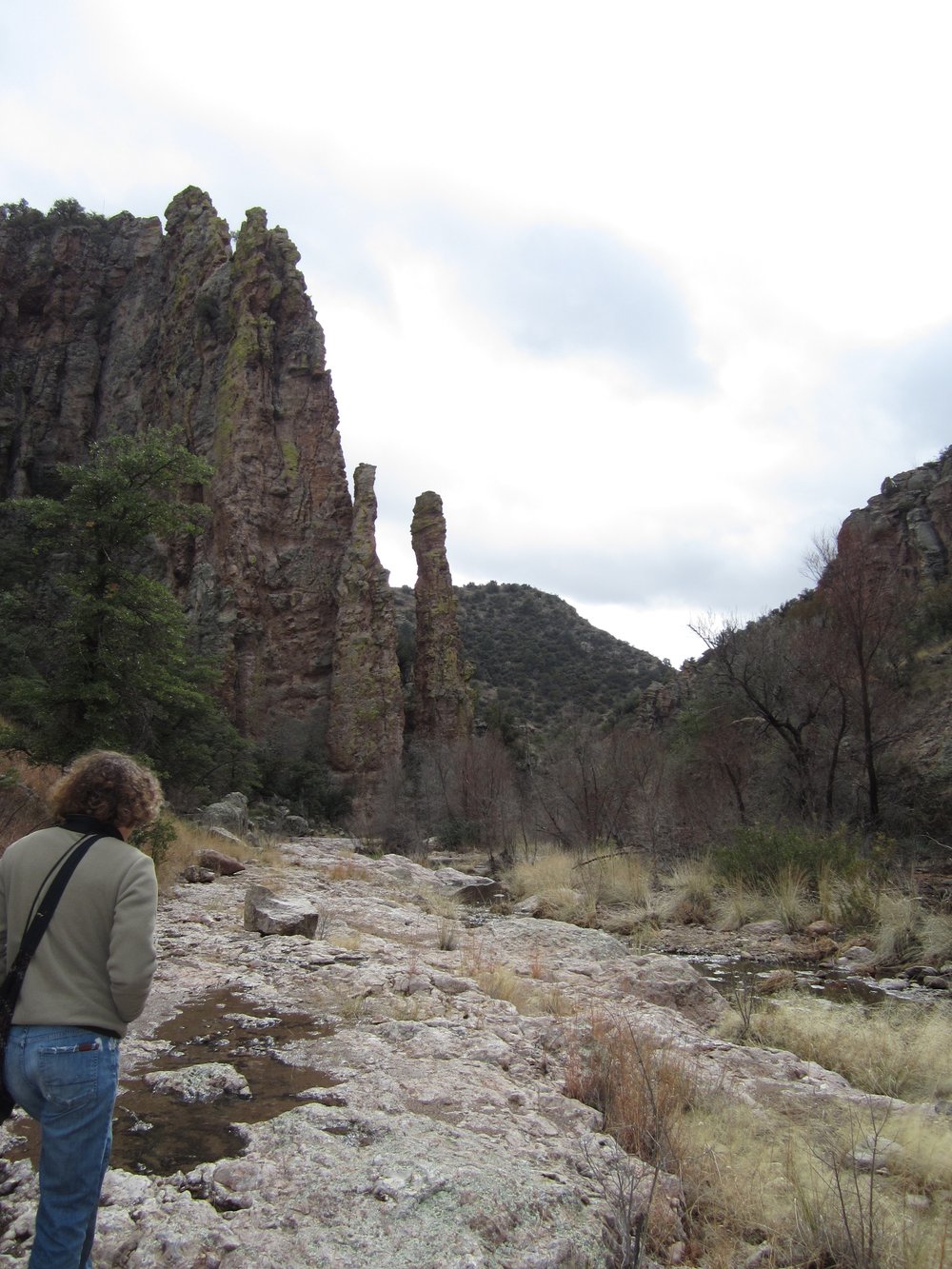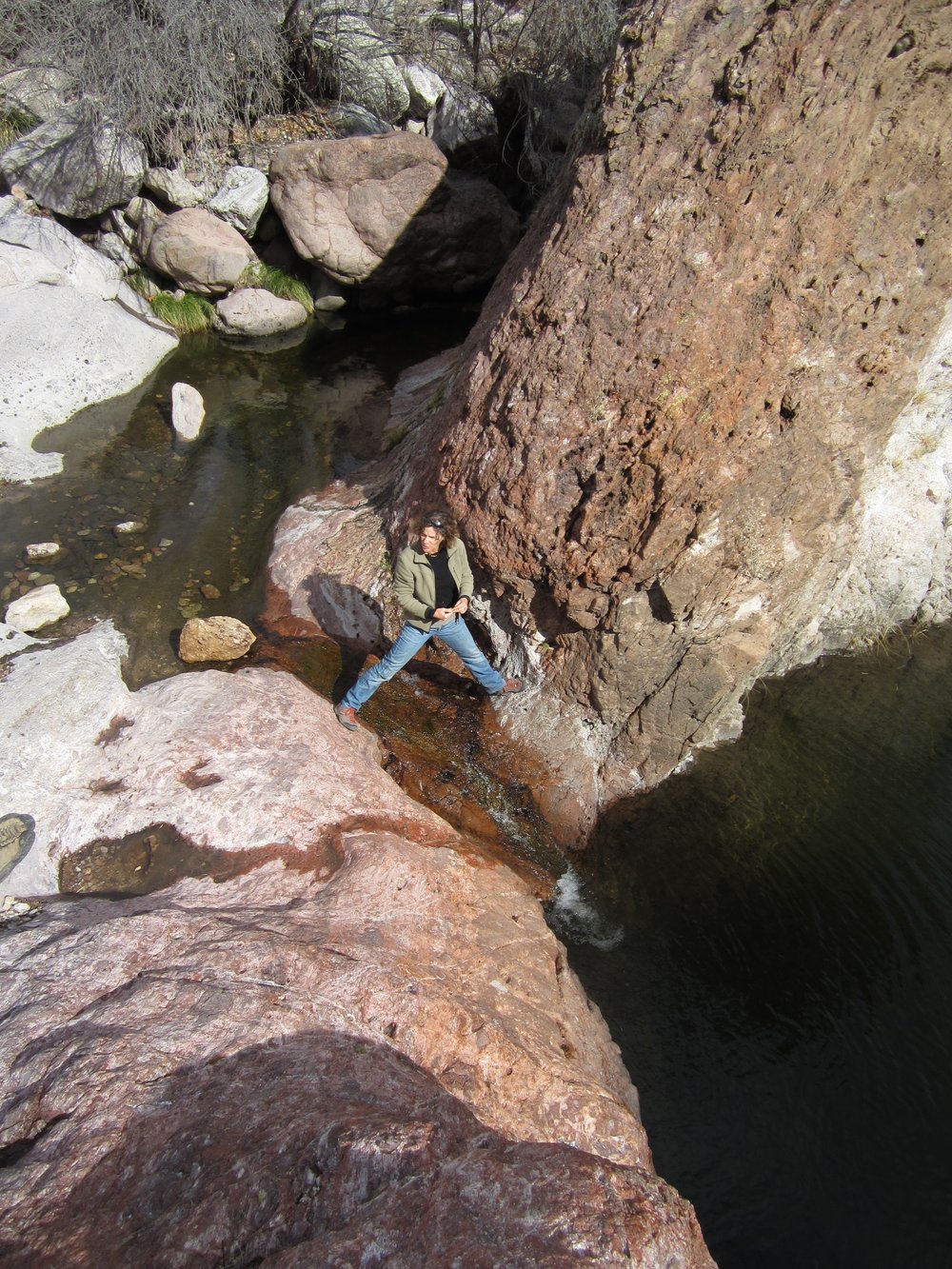Orange-Crowned Warbler
 Common Murres on the Water, Kittiwakes on Gull Rock
Common Murres on the Water, Kittiwakes on Gull Rock

 Orange Crowned Warbler--Photo by Peter Schoenberger
Orange Crowned Warbler--Photo by Peter Schoenberger
A week ago I had never seen or heard an Orange-crowned Warbler. They pass through the Hudson Valley where I live during their migration, but I have never had a chance to see and admire one. They are not a warbler that would command the most attention. They are yellow, a dusty yellow, with few other defining features. The orange crowned part is pretty subtle. And the song is a bit raggedy, not one of the magnificent warbler songs.
Turns out these little birds are everywhere in Alaska on the Kenai Peninsula. And after being thrilled at seeing them a week ago, I've now started to ignore them. That happened too fast.
Excess always makes us dull to something. Too much good food, too many beautiful sunsets, too many spectacular views of big, snow-covered mountains--even the best things push our attention elsewhere. But I'd like to resist that in praise of the orange crowned warbler and other birds we've seen a lot of here in Alaska (and the ridiculously beautiful views). Like the White-Crowned Sparrow, with its striking helmet and raspy song. Or the hundreds--perhaps thousands--of common Murres and Kittiwakes seen off of Homer while on a boat ride yesterday. A local birder took us out in his tin boat, circling Gull Island, where the Murres bobbed in the water, their beautiful black backs shining in the almost-sun (after days of rain). How could I ever tire of a Common Murre? He then took us into some little coves where we spied a few Marbled Murrelets, and some mountain goats high on a green hillside. The Murrelets and the goats--much less common, but no more special than the Orange-crowned warbler or Common Murres.
Rufous-capped Warbler

That day, we had had no luck finding the bird. No one that day found it, not even the friendly couple who had driven down from Tempe. They helped us identify the Hammond’s flycatcher, and when I pointed toward the sky he was the first to call it: Golden Eagle. Later, we joined this couple sitting on a bench and watching one of the famous feeders in Madera Canyon as Lesser Goldfinch and Bridled Titmouse came and went. Everyone but me drove home disappointed. I hardly cared about finding such a special bird—I was still intent on orienting myself in this new birding landscape, on finding the usual birds. I was happy—no, thrilled--with my Black-throated Sparrow (not to be confused with the Black-chinned Sparrow) and with the Lesser Goldfinch, and the Bridled Titmouse birds I had never seen before.

That day, we had had no luck finding the bird. No one that day found it, not even the friendly couple who had driven down from Tempe. They helped us identify the Hammond’s flycatcher, and when I pointed toward the sky he was the first to call it: Golden Eagle. Later, we joined this couple sitting on a bench and watching one of the famous feeders in Madera Canyon as Lesser Goldfinch and Bridled Titmouse came and went. Everyone but me drove home disappointed. I hardly cared about finding such a special bird—I was still intent on orienting myself in this new birding landscape, on finding the usual birds. I was happy—no, thrilled--with my Black-throated Sparrow (not to be confused with the Black-chinned Sparrow) and with the Lesser Goldfinch, and the Bridled Titmouse birds I had never seen before.
Two days later, Deb and I left for Bisbee stopping at Patagonia Lake on the way there. As we left Tucson, a flock of Gambel’s Quail crossed the road. I had Deb pull over as I admired the plump birds that disappeared amidst prickly pear, and palo verde.
“It’s hard to get excited about them,” Deb said as I delighted in seeing the birds and mentally checked them off of my imaginary life list. “There were half a dozen in my backyard this morning.”

I wondered at how spoiled Arizona birders are. There are wonderful birds year round—they hardly knew the poverty of an east coast winter where we are left with silence and stillness and hope. And they have the luxury of becoming bored with an adorable bird. I was painfully jealous and spent the rest of my trip fantasizing moving to Patagonia, a sleepy, quaint town near the Mexico border with a restaurant that sells great BLTs and amazing birding areas from people’s backyard feeders to Patagonia Lake. This is also the location of the famous “Patagonia Picnic Table.”
Deb and I spent a lot of time hopping across the maze of small streams that leak into the Lake, which is filled with Common Mergansers, Pied-billed Grebes and Coots. Great blue herons poke the edges and somewhere in the sycamore trees lurked a Trogon. A man with a large camera ran up to us, his breath short, his heart racing. “Today I am the luckiest man in the world.” And he showed us a photo of the Trogon. I did not see the Trogon but everything from the Gambel’s Quail to all of the birds at Patagonia made me feel like the luckiest woman in the world.

“I’d be up for it,” she said in her off hand manner.
“Really? You’d go down there again?” I smiled into my cell phone.
Deb was indefatigable. So off we drove on my last day in Arizona to find the warbler. We arrived at the lonely canyon around 9 in the morning, not exactly prime birding time. But the sun was just beginning to touch down in the desert canyon. We walked by a dry streambed where sycamore trees grew strong. We passed through a gate, and started up the dusty, rocky trail.
Coming out of the canyon was a trio of birders. They all looked glum, shaking their heads. “No warbler.”
This didn’t dull my enthusiasm, somehow I sensed that Deb and I were a golden duo. After all, we’d seen the black-chinned sparrow, hadn’t we?
We crossed over a dam, water trickling over the edge, green algae lacing the edge of the spill. Then we tromped by a narrow stream, thick with brush. Above us white-throated swifts soared. A photographer passed us, also looking discouraged. “It’s not here,” he declared.
“OK,” I said, remaining confident.
He headed downstream, while Deb and I climbed a bit higher.

I snapped my binoculars to my eyes and there it was, the yellow warbler with a striking brown cap. I motioned to the photographer, and he ran back, camera at the ready. The bird flit from one bush to the next, escaping any but the briefest looks. But this small chase delighted me. Deb and I hopped along rocks by the streambed, emerging scratched and my pants ripped.
We returned to Deb’s car, the trip ending on a high note, thanks to Deb’s persistence and generosity. 116 birds, 37 of them new for me. But everyone one of them a special bird.
Black-chinned Sparrow



We walked out a breakwater and saw the silhouettes of two roosting Great Horned Owls (satisfying an unending need for owls). A Greater Yellowlegs waded in the water and a Killdeer called as it flew by. There were lots of ducks to enjoy in the impoundments around the cranes. We ate lunch and perfected our duck identifications: there was a Cinnamon Teal with its elegant cinnamon colored head, there were Gadwall, with their black butts, and Pintails with long necks, a white stripe snaking up from the chest. There were rumors of a Sora, which a small army of cheerful photographers waited to document.
The sun beat down on us in the exposed grasslands. Mid-afternoon I was tired so we headed toward home. I was dreaming of a nap.
“Want to go look for the Black-chinned Sparrow?” Deb asked.
I felt my heart flutter.
“We could walk up M Canyon and look for one,” she said, her eye trained on the road.
I pointed to a red-tailed hawk on a pole, peering out at the vast desert, raw with overgrazing.
M Canyon isn’t really M Canyon, but I don’t want to tell anyone where this is. It’s a secret spot, the sort of place locals keep to themselves.
“Of course,” I said.

We headed back downhill to the point we had last seen a bird. We stood. We pished. We gazed into desert brush, at rocky small cliffs.
“There it is,” Deb said with confidence.
I put my bins to my eyes. And there perched the elegant compact gray bird, with a faint black splotch on its chin, announcing itself to the world: Black-chinned Sparrow.
Sycamore Canyon

So of course I want to go. It’s my third day in Tucson and I had spent the day before in Catalina State Park, a place I hiked regularly when I lived in Tucson and a place that is far from remote or rugged. Families with children crawled their way up the wide sandy paths, and played by the stream that trickles through the valley. I had found lots of wonderful, new for me birds there: the Green-Tailed Towhee, the Pyrrhuloxia (known to locals as a Pyro), and an unidentifiable Hummingbird perched atop an ocotillo. I now wanted away from the crowds. Sycamore would be an adventure.

So of course I want to go. It’s my third day in Tucson and I had spent the day before in Catalina State Park, a place I hiked regularly when I lived in Tucson and a place that is far from remote or rugged. Families with children crawled their way up the wide sandy paths, and played by the stream that trickles through the valley. I had found lots of wonderful, new for me birds there: the Green-Tailed Towhee, the Pyrrhuloxia (known to locals as a Pyro), and an unidentifiable Hummingbird perched atop an ocotillo. I now wanted away from the crowds. Sycamore would be an adventure.

The turn off of Route 19, which flies south from Tucson into Mexico, took us to the long, winding dirt road to the canyon trailhead. The sky hovered gray above us, not the usual blue-sky I was hoping for. But the moody sky added to the fantastic, empty landscape. It stretched in all directions, no towns in sight. When I begin to feel cramped in my life on the east coast, it is such landscapes that I call to mind, to assure me we have not trampled every last piece of our planet.
And then we passed a cluster of trailers with white and green Border Patrol trucks parked outside.
"I remember this part of the southwest," I said. "I always found it troubling."
"And it's gotten worse," Larry said. From the east coast, what is happening in Arizona is news I read of in the Times. But here with the border so close, what is news hovers in the air.
No cars were parked at the trailhead. We launched into the canyon, which runs south, six miles to the Mexico border. We saw remains of people moving north, like empty water bottles or clothes tucked under a bush. These tokens lent an edge to how I looked at the land. We were out for a fun hike, and that felt like a luxury as I thought about the history of this border land.
The first part of the hike was lush, studded with fascinating rock formations. We spied a few birds along this more open, grassy section: Spotted Towhee, and a Ruby-crowned Kinglet. But once we entered deeper into the canyon the birds vanished. Red rock pinnacles rose from the earth, and the clouds started to drift off, leaving patches of blue sky. We walked a few miles hopping the stream and clambering down rocks (though I never found any of this strenuous) until we arrived at a small pool of water. We stopped to picnic, and lounge in the sun. We could have pushed on further—but why walk if you can’t see birds?

“We’re birding.” In my nervousness—guns make me nervous--I explained the obvious.
“I know,” he said. “I didn’t want to bother you.”
And I wondered what the world would be like if he said that to everyone he met in this canyon.
I put my binoculars to my eyes to look at the plain gray chest of the bird, the white eye-ring, the rufous crown.
“It’s a Rufous-crowned sparrow,” Deb reported.